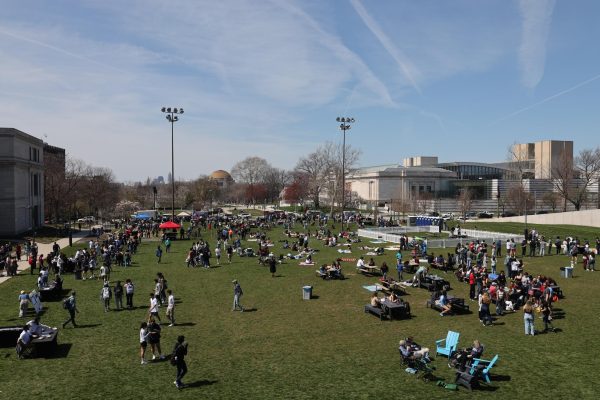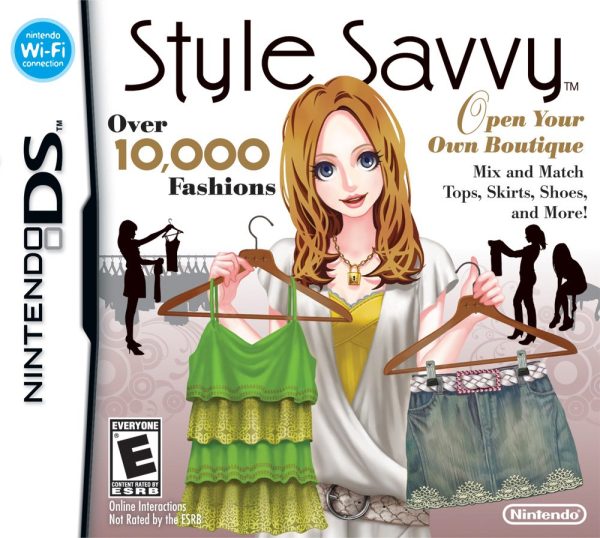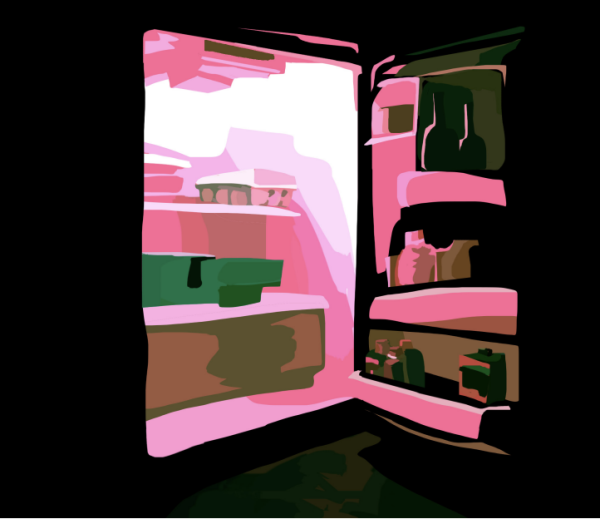What Used to Be
The elephant in the room
September 26, 2014
Earlier this week, walking through the Mather Quad, I had the surprising realization that Merging, our “Wet/Dry Fountain,” was actually running again. I very well could be one of the last people to see this. I rarely walk farther north than Thwing, and when I do, it tends to be dark.
The fountain could very well have been running all year. I remember fondly the image, during orientation, of technicians peeling apart the behemoth statue that for years has sat stagnant and altogether dry.
The new students on campus—freshman, newly arrived transfers and others—do not have the memories of a dry Merging. Seeing the statue in action on Tuesday, though, made me wonder about some of the other problems, oversights and conflicts that have occurred on this campus. Most of the problems are forgotten.
This might be due to a short institutional memory. Generally, the people who notice the glaring issues are only here for four years—undergraduate students. The people who are here longer, professors, administrators, some select graduate and undergraduate students (sixth year seniors?), tend to become immune to the problems and episodic stress on the Case Western Reserve University campus.
When I first got to Cleveland for the fall 2011 semester, the seniors and juniors lamented that we would never experience “the Leutner they knew.” Leutner Commons, the dining hall in the North Residential Village, currently sits seldom empty, full of students eating the balanced cheeseburger-pasta-ice cream dinner on a daily basis. At one time, that facility was worse. The year before I arrived, Bon Appétit changed the building, making it more attractive. Soon the building will probably be overhauled again. As more students come to campus, it will have to be. But my obliviousness to its history illustrates exactly the issue I am addressing here.
Across campus, remnants of the history of Case Western Reserve University. On Euclid Avenue sits an arch, the entrance to the Flora Stone Mather College for Women. Adelbert Hall, as its facade describes, was once Adelbert College for Men. The Weatherhead School of Management was once housed in Sears. Do you believe me? Go read the sign in the entrance to that building.
Do people know the history of the Binary Walkway? As recently as 2004, a building was on that site. How about the fire that enveloped Adelbert Hall in 1991? That is still within the lifetime of some students and comfortably within the careers of some professors. Yet, I’m sure no one remembers.
And what about the Case Main? I am not referring to the main quad, which most people would probably think I was. No, I mean the incredibly beautiful and involved building that was demolished in 1972. It used to sit where the Crawford Hall, our homage to early 1970s architecture, now resides. Remnants of the building still remain. According to the university archives, stones from the building were used to build the base to the Michelson-Morley fountain outside Yost and the Case Institute of Technology sign on Euclid Avenue. You can find a picture of the Case Main building in the law school. Its on a drawing with the original Adelbert Hall (before the fire), Guilford House, the Mather Arch and others. I encourage everyone to go see it.
These are only the big history topics. There are definitely the smaller things. Where did upperclassmen live before the Village at 115? Do some students know that Yost was a dorm? And even the modern developments might be unknown. While some people have heard, I am sure there’s still a majority of campus does not realize that within the next couple years think[box] will move to the multistory, somewhat old and dilapidated building behind Veale. Take a look sometime.
Still there are more stories. Student attitudes have changed over time. Student experiences have even more. As recently as 10 years ago, CWRU was 65 percent male. We have brought that number down to 55 percent, but knowing the past gives perspective and context to our current situation. This is especially true when the online paradigmatic resource, Urban Dictionary, includes an alternate meaning for CWRU. Our women, according to them, are not the most attractive.
University Archives has tried to catalog some of the big things. But the research seems to have stalled. For most of the buildings, either existent or not, knowledge of their uses and inhabitants ends around 1949. I argue that this is a tragedy. There is a necessity to knowing how things used to be.
Our knowledge of the past doesn’t have to be encyclopedic. I don’t expect students to rattle off the names of demolished buildings. I don’t want students worried about studying university history like it was a class. But it is not too much to ask that students know what the experience was like for the seniors when they were freshmen. It is not too much to know what CWRU used to be. The university encourages this sort of institutional memory. The Emerging Leaders Program encourages older students to tell younger ones how they led and what worked. In Kelvin Smith Library, signs advertising our Special Collections are common, and old portraits of campus landmarks adorn every wall.
I have often heard students compare CWRU critically to other colleges. They regularly critique this institution for not having the kind of “culture” or “tradition” that other schools have. It exists, students just need to be active in finding where it sits. Maybe then, the students who come later will not have the same complaints.
Andrew Breland is a senior opinion columnist. Contact him at awb69@case.edu.






















